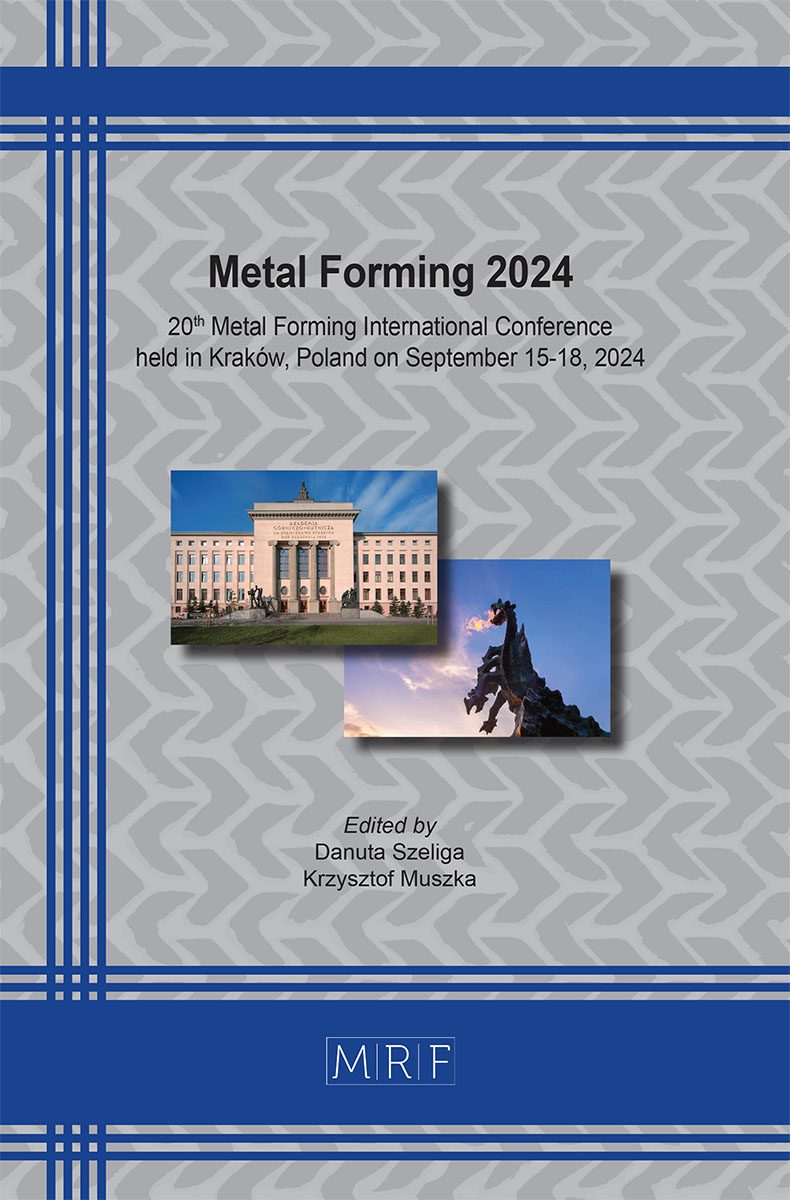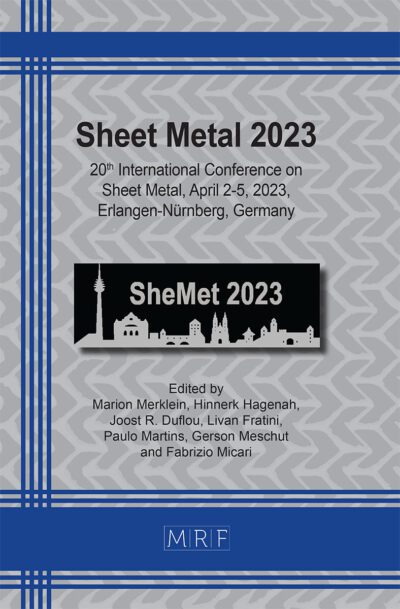–
Integration of automated roll pass design and simulation for the development of shape rolling technology
BIBA Nikolay, STEBUNOV Sergey, MALTSEV Pavel, BELUGIN Vitaliy, ALIMOV Igor
download PDFAbstract. The shape rolling technology is a productive manufacturing process. Meanwhile, its efficiency is highly dependent on a proper roll pass design and accurate adjusting of a rolling mill, which is especially critical for new products and complicated profile shapes. Traditionally, the roll pass design methods have been developed relying on extensive experience and knowledge accumulation, resulting in empirical rules expressed by analytical formulae. Nowadays, some design methods are converted into computer programs to speed up calculations. Nonetheless, the approach based on empirical rules has limitations, especially when implemented to develop the rolling technology for new materials and complex shape profiles. The effectiveness of the roll pass design can be significantly enhanced with the help of finite element (FE) simulation of the material deformation that happens in the stands of the rolling mill. The material flow prediction provided by FE simulation is more accurate than empiric formulae, leading to more accurate load, torque, and energy estimations. The presented paper is focused on the integration of the FE simulation of the rolling process with the roll pass design to make it effective and automated for a wide variety of profile shapes.
Keywords
Shape Rolling, Simulation, Finite Element Method, Roll Pass Design, Industrial Implementation
Published online 9/15/2024, 10 pages
Copyright © 2024 by the author(s)
Published under license by Materials Research Forum LLC., Millersville PA, USA
Citation: BIBA Nikolay, STEBUNOV Sergey, MALTSEV Pavel, BELUGIN Vitaliy, ALIMOV Igor, Integration of automated roll pass design and simulation for the development of shape rolling technology, Materials Research Proceedings, Vol. 44, pp 758-767, 2024
DOI: https://doi.org/10.21741/9781644903254-81
The article was published as article 81 of the book Metal Forming 2024
![]() Content from this work may be used under the terms of the Creative Commons Attribution 3.0 license. Any further distribution of this work must maintain attribution to the author(s) and the title of the work, journal citation and DOI.
Content from this work may be used under the terms of the Creative Commons Attribution 3.0 license. Any further distribution of this work must maintain attribution to the author(s) and the title of the work, journal citation and DOI.
References
[1] B.P. Bahtinov, M.M. Shternov, Roll pass design; Metallurgizdat: Moscow, Soviet Union, 1953.
[2] Z. Wusatowski, GrundlagendesWalzens; VEBDeutscherVerlagfürGrundstoffindustrie: Leipzig, Germany, 1963.
[3] D. Matteo, Wicon EVO – a preview of Danieli’s easy-to-use rolling process simulation software for wire rod and barmills. In Proceedings of the Rolling-12, Trieste, Italy, 25-28 October 2022.
[4] Weiner M.; Renzing, C; Stirl, M.; Schmidtchen, M., PyRolL. 2023. https://github.com/pyroll-project.
[5] S. Stebunov, N. Biba, A. Vlasov, A. Maximov, Thermally and Mechanically Coupled Simulation of Metal Forming Processes. In Proceedings of the 10th International Conference on Technology of Plasticity, Aachen, Germany, 25-30.09.2011.
[6] O.C. Zienkiewicz, Flow formulation for the numerical solution of metal forming processes. Numerical analyses of forming processes, London, UK, 1984.
[7] N.K. Gupta, Steel Rolling: Principle, Process & Application, London, UK, 2021. https://doi.org/10.1201/9781003182399













